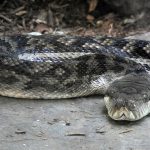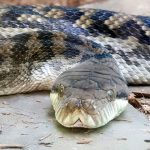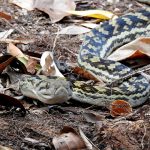AMETHYSTINE PYTHON
Simalia amethistina
Jewel of the Canopy
The Amethystine Python is one of Australia’s most impressive and visually stunning serpents. With its graceful length and shimmering iridescence, this python conjures images of towering rainforests and wild, untamed landscapes.
Habitat and Distribution
In Australia, the Amethystine Python is mainly found in:
- Northern regions, especially the lush Cape York Peninsula (Queensland)
- The Kimberley region of Western Australia
Beyond Australia, it also ranges through:
- Papua New Guinea
- Several countries in Southeast Asia
Preferred Environments
This python showcases remarkable adaptability. You might find it slithering through:
- Dense tropical rainforests, where the air is thick and fragrant with the scent of earth and green leaves
- Woodlands echoing with the calls of parrots and cockatoos
- Swamps alive with the chorus of frogs and the gentle movement of water
- Coastal regions, where salt-laden breezes carry the tang of the sea
Physical Characteristics
| Trait | Description |
|---|---|
| Size | One of the largest snake species—adults can exceed 6 metres |
| Build | Slender, agile, especially compared to other large pythons |
| Colour | Dark brown to black, but named for the amethyst-like, purple sheen visible in certain light |
| Tail | Prehensile—perfect for gripping branches high above the forest floor |
Imagine sunlight filtering through high rainforest canopies, glinting off iridescent scales that shift in colour like the surface of a gemstone.
Lifestyle and Adaptations
Diet and Hunting
Amethystine Pythons are ambush predators. Often motionless, they blend seamlessly with the play of shadows and dappled leaves, patiently awaiting unsuspecting prey.
Diet consists of:
- Mammals such as tree kangaroos, wallabies, and possums
- A variety of birds and some reptiles
After a lightning-fast strike, they employ their muscular coils to constrict prey, using subtle shifts in pressure until the hunt is over.
Movement and Activity
- Primarily arboreal (tree-dwelling), their prehensile tail aids in navigating the heights of tall forest trees
- Excellent climbers—their movement is sinuous and silent, often undetected above the ground
- Also adept swimmers
- Mostly nocturnal (active at night), but occasionally bask in filtered sunlight during the day
Reproduction
- Oviparous: They lay eggs, often in hidden, humid places
- Breeding: Usually occurs in the dry season
- Clutch size: 10 to 50 eggs; the female carefully coils around them, regulating temperature and protecting them until hatching
Conservation and Human Interaction
Despite their awe-inspiring nature, Amethystine Pythons face notable threats:
- Habitat loss due to deforestation and land development
- Illegal collection for the pet trade
- Human persecution, often due to misunderstanding or fear
They are protected under Australian law—permits are mandatory to keep them in captivity. Their preservation as a species is essential, not only for the balance of the ecosystems they inhabit but also for the enduring wonder they inspire.
Encountering This Python
Should you encounter a snake in the wild:
- Keep a respectful distance
- Observe quietly, allowing the animal to remain undisturbed
- Never attempt to touch or move it
- Always follow local wildlife regulations
Encountering an Amethystine Python is like glimpsing a living thread in the rich tapestry of Australia’s ecosystems. Their presence is a reminder of the extraordinary beauty and complexity of the natural world. By learning to appreciate and respect these magnificent pythons, we take a step toward ensuring that such remarkable wildlife endures—shimmering and silent—for generations to come.
Every respectful encounter becomes a story: one not only of a snake in the wild, but of our connection to the land, its creatures, and our shared responsibility to protect them.




